(5228 products available)












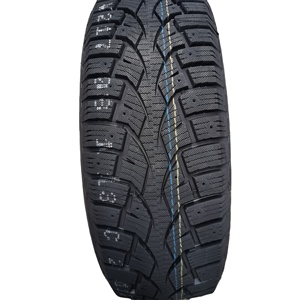

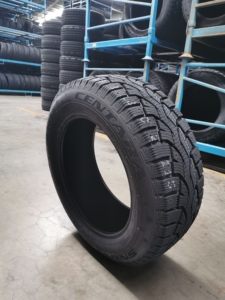


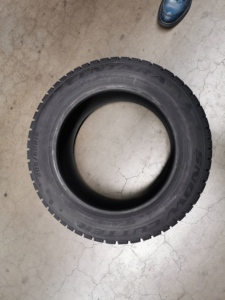
























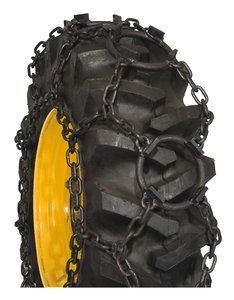





























































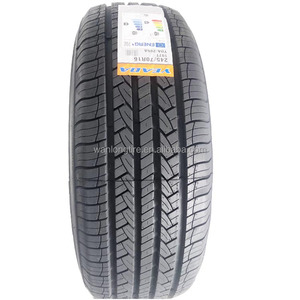
























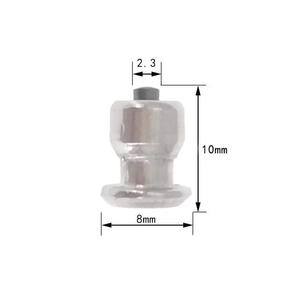














































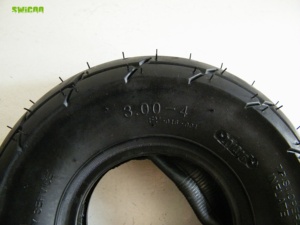












A studded tire is a type of tire fitted with metal studs that gives vehicles better traction on ice and snow. The studs can either be made of hard plastic or metal. Studded tires come in two main types:
Winter studded tires
Winter-studded tires are often referred to as studded tires. They are designed with tiny metal studs embedded in the tread. They provide a grip-like rough surface on icy roads, minimizing the risk of skidding and enabling drivers to maneuver better in winter conditions. The tires are composed of a softer rubber compound. This enables them to grip the road better than other types of tires. They also have deeper tread depths and distinctive tread patterns that help channel water and snow, further improving grip and traction.
Racing studded tires
These are tires used in motorsports events that occur on frozen lakes or snow. They are designed to maximize traction and grip in these challenging environments. Racing studded tires are usually much harder than winter tires. They are manufactured using harder rubber compounds. This is because racing conditions generate a lot of heat, which the tire needs to withstand. Additionally, racing studded tires have a lower tread depth compared to winter tires. This is because the lower tread depth maximizes the contact area with the track. The tires are also fitted with a higher number of studs compared to winter tires. This results in a more stable grip on the track, enabling the vehicle to accelerate, brake, and make sharp turns with minimal slip or skidding.
Studs
Studded tires feature metal studs distributed evenly throughout the tread. The number and layout of these studs can vary based on the tire's design and intended use. Typically, each tire has between 80 and 200 studs. The studs are often made from durable materials like aluminum or tungsten, which can withstand the rigors of icy roads.
Tread Design
The tread pattern of studded tires is specifically designed to maximize traction on ice and snow. This may include features such as deeper tread depths, wider channels for water and slush evacuation, and unique block shapes that enhance grip. In addition, the tire's tread is typically made from a softer rubber compound than non-studded winter tires. This allows the tire to remain flexible and provide traction in low-temperature conditions.
Size
Studded tires come in various sizes to fit different vehicles. The tire's size is indicated by a series of numbers representing its width, aspect ratio, and diameter. For example, a tire size might be 225/45R17, meaning it is 225 mm wide, has a 45% aspect ratio, and fits a 17-inch diameter wheel. Studded tires are available in both metric and imperial sizes, allowing them to be tailored to specific vehicle requirements.
Speed Rating
Studded tires have speed ratings to indicate the maximum speed at which the tire can safely perform. The speed rating is represented by a letter, with each letter corresponding to a specific speed range. For example, a tire with a "Q" speed rating is good up to 160 km/h (99 mph), while a tire with a "T" speed rating is good up to 190 km/h (118 mph). It is essential to choose a studded tire with a speed rating appropriate for the vehicle and driving needs.
Load Rating
Studded tires also have load ratings that indicate the maximum load each tire can support. The load rating is represented by a number corresponding to a specific load, measured in kilograms or pounds. For example, a tire with a load rating of 600 kg (1323 lbs) can support a maximum load of 600 kg (1323 lbs) per tire. It is essential to choose a studded tire with a load rating appropriate for the vehicle's weight and cargo requirements.
1. Inspect the studs
Regularly check the condition and wear of the studs on the tires. Replace any missing or damaged studs to maintain optimal grip on icy roads.
2. Check tire pressure
Maintain proper tire pressure according to the manufacturer's recommendations. Underinflated or overinflated tires can affect vehicle handling and stud performance.
3. Monitor tread depth
Regularly check the tread depth of the studded tires. A deeper tread depth can improve traction on snow and ice, while a worn tread depth may require tire replacement.
4. Clean the tires
After using studded tires, remove any dirt, mud, or debris from the tire surface. This will help maintain the tire's performance and prevent premature wear of the studs.
5. Rotate the tires
To ensure even wear on all four tires, it is recommended to rotate the studded tires regularly. For example, the front tires can be moved to the rear, and the rear tires can be moved to the front.
6. Use studded tires appropriately
Only use vehicles with studded tires on roads where their performance advantages can be fully utilized, such as icy or snowy roads. Avoid using studded tires on dry asphalt roads, as this may cause excessive wear of the studs and reduce their lifespan.
Choosing the right studded tires for a vehicle involves considering several factors that align with specific needs and driving conditions. Here are some key points to keep in mind:
By considering these factors, one can choose the right studded tires to suit specific needs and driving conditions, ensuring safety and optimal performance during winter.
Below are some of the steps that can be followed to replace a studded tire:
Q1: Are studded tires good in the snow?
A1: Studded tires are excellent in snowy conditions, especially in icy regions. The studs grip the ice, reducing the likelihood of snow buildup on the treads, thereby enhancing traction.
Q2: What are the disadvantages of studded tires?
A2: Studded tires can be noisy, particularly on dry or wet roads. They may also damage road infrastructure, and their performance on non-iced surfaces is inferior, leading to faster wear.
Q3: How long does it take to install studded tires?
A3: The time required to install studded tires depends on the vehicle type and the workshop's efficiency. Typically, it can take anywhere from 1 to 3 hours.
Q4: Can buyers get custom-sized studded tires?
A4: Yes, custom-sized studded tires can be manufactured to meet specific requirements. However, this may increase the cost and extend the delivery time.
Q5: How can someone tell if a tire is a studded tire?
A5: Studded tires can be identified by their visible metal or ceramic studs protruding from the tire's surface. These studs are arranged in a pattern designed to maximize traction on icy roads.